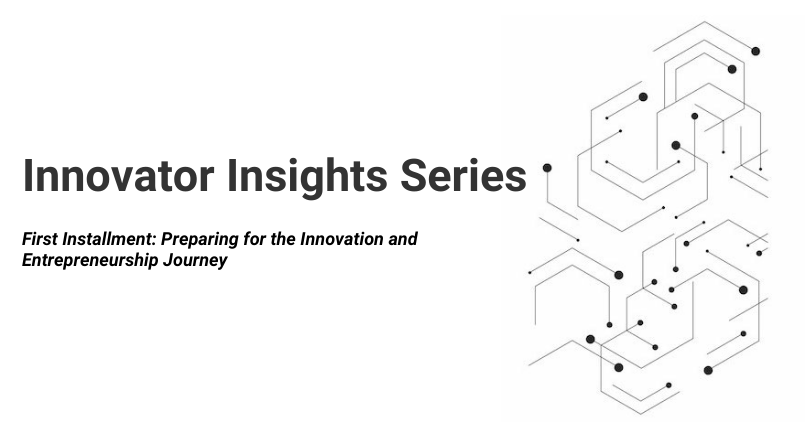
Donna Brezinski never set out to invent the first portable light therapy device to treat children suffering from jaundice. As a long-time healthcare professional, she cared for infants with severe neonatal jaundice using a simple but effective blue light therapy. She was troubled to learn that millions of children around the world still do not have access to this critical treatment. Costly equipment, distribution challenges, or unreliable power sources are just a few of the obstacles. She committed herself to make this treatment available for all children.
Brezinski started by commandeering her family’s dining room to hack out a prototype for an affordable, easy-to-use device made from simple materials. Her journey continued with a great deal of research, trial and error, and guidance from training programs like Xcelerator. After several years, Brezinski made her idea a reality. Today, her startup, Little Sparrows Technologies, is producing and distributing the next generation of jaundice treatment for children around the world.
Empowering Early Stage Innovators on their I&E Journey
Like many innovators, Brezinski’s passion to solve a challenging problem led her to embark on a journey of innovation and entrepreneurship (I&E). But solving enormous challenges through invention is a monumental undertaking in and of itself. The I&E journey can take unexpected twists and turns, often landing many new inventor-entrepreneurs – especially those working in global health – in situations or markets they never knew existed.
As innovators explore possible paths to take, they quickly discover that there’s no one way to transform an idea into an impactful solution. And, as USAID noted in Pathways to Scale: A Guide on Business Models and Partnership Approaches to Scale-Up, each path comes with its own set of challenges. This gray area can cause many early stage innovators to struggle in identifying the right route to scale their invention. For example, should a team of university students inventing new technologies create a company? Should academic researchers consider licensing their idea from the start? Should second-career entrepreneurs working to solve global health challenges partner with a larger company? These considerations often lead to countless follow up questions that can take months, even years, to answer.
For over 20 years, VentureWell has worked to support, train, and foster networks to ensure the next generation of science and technology innovators realize and maximize their potential in bringing their ideas to impact. Since 2012, over 200 early stage innovator teams have participated in our Xcelerator program, which provides training and coaching for grantees of the Saving Lives at Birth: A Grand Challenge for Development, Powering Agriculture: An Energy Grand Challenge for Development, and Grand Challenges Explorations.
Our Xcelerator program data – from immediate and long-term participant feedback surveys to in-depth interviews with program alumni – enables us to produce this Innovator Insights Series. This series will share valuable findings and best practices around embarking on a journey in I&E. At the end of the series, we’ll produce a report that will synthesize our findings within the themes examined throughout the series. The series and report will focus on areas critical to success for early stage innovators as well as for the community of trainers and coaches supporting tomorrow’s inventor-entrepreneurs, such as:
- Identifying critical skills and mindsets
- Maximizing training and mentorship
- Building the right team
- Understanding global customers
- Developing a solid strategy
The Xcelerator program and the Innovator Insights Series are made possible by USAID’s Center for Accelerating Innovation and Impact, The Lemelson Foundation, and The Bill and Melinda Gates Foundation.
Preparing for the Journey
There are many resources available to innovators who want to understand specific innovation pathways, from on-campus programs and lectures, to books to resources such as the global health-focused USAID’s Pathways to Scale guide. Yet there is no secret formula to ensure individual inventor-entrepreneurs are adequately primed for their I&E adventure.
The first installment of the Innovator Insights Series unpacks the importance of self-reflection and fostering an entrepreneurial mindset, both critical factors that contribute to an innovator’s successful journey. We spoke with the following innovator-entrepreneurs, coaches, and experts involved with the Xcelerator program to identify key reflection points and mindsets:
- Donna Brezinski of Little Sparrows Technologies
- Sebastian Manhart of Simprints
- José Nuño of Unima
- Edward Bitarakwate of Elizabeth Glaser Pediatric AIDS Foundation (EGPAF)
- Agostinho Almeida and Michael Free, entrepreneurship coaches
- Christina Tamer and Laura Sampath, both of VentureWell
Self-Reflection: Start the Journey with Clarity
Just as some pathways are less than ideal for a particular innovation, not all innovators are suited for every I&E pathway. Reflecting on inner motivations and strengths and weaknesses can provide greater clarity around the best direction to consider.
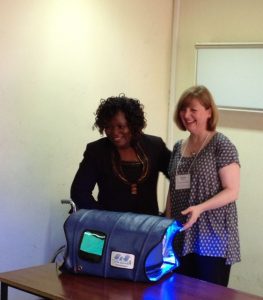
“As I continue on my journey, I’ve come to know myself better and know the things I’m good at and still need to work at,” said Brezinski. “Self-reflection is a valuable discipline. When I identify something that makes me uncomfortable or less secure, my first inclination is to ask, ‘Why? What is it that is making me unhappy or feel overly challenged?’ At that point I go through the mental process of deconstructing it. That helps me figure out how I’m going to deal with it.”
The discipline of self-reflection relates as much to understanding their personality as it does to being clear about their core motivation or passion, or to managing uncertainty.
Understand Intrinsic Nature
Personality plays an important role in an innovator’s journey. It relates to tendencies and interests. It informs what it takes to feel satisfied and fulfilled in work and life. It illustrates preferences around social interaction. It explains the willingness to take risks to achieve a goal. Self-awareness can help innovators seek out or actively create working environments and roles that allow them to leverage prominent aspects of their personalities.
Take Sebastian Manhart of Simprints. He has an innate sense of urgency. “I’m impatient. I don’t have 10 years to slowly climb up a conventional career ladder before having an impact,” he said.
As it relates to his work in global health in low-resource settings, Manhart’s urgency is required. Over 1 billion people worldwide lack formal personal identification, preventing access to essential services to those who need them most. His nonprofit tech startup developed a low-cost, portable fingerprint identification scanner and software that integrates with almost any medical record system, allowing for real-time identification and access to patient records.
“The path I chose is centered around solving big problems quickly,” said Manhart. “I want to take on as much responsibility as possible and fail often. That allows me to accelerate growth. I learn more in a short amount of time than I would in a structured environment.”
Unima’s José Nuño feels his creative nature was integral to starting his I&E journey. “I need to constantly learn new things, meet new people, and invent,” said Nuño. “I also don’t like routine. I like to take risks in order to make new things. I would rather create a new path instead of follow an existing one.”
Nuño’s personality is useful when tackling seemingly insurmountable global health challenges. Each year, a large percentage of deaths in low-resource settings are caused by preventable or treatable health issues. Nuño’s startup devised an innovation that creates a visual reaction in blood samples, allowing for a simple, quick screening of infected patients – with little or no equipment or training. “My personality lends itself to finding unconventional solutions,” said Nuño. “That’s important when you’re working to solve incredibly difficult problems.”
Manhart and Nuño are able to identify nuanced aspects of what makes them tick. The more early-stage innovators can take stock of who they are before moving into uncharted territory, the better.
“Thinking about who you are doesn’t require hours of intensive therapy,” said Laura Sampath. “It could be as simple as talking with a seasoned entrepreneur about what makes them get out of bed everyday to do what they do. Do you see similar traits in yourself? Or is there something you have that they don’t? It’s a worthwhile process to take before you get too far along in your journey.”
Find a Driving Force
It’s important for early stage innovators to reflect on their motivations. Knowing what drives them can help clarify which path to consider, what roles and responsibilities are best aligned with their passions, and if they’re willing and able to go the extra mile – a requirement in I&E.
Among the innovators we interviewed, making an impact was more motivating than commercializing a specific product. “I’ve seen this time and again. Successful innovators are more passionate about solving the problem than they are about the technology itself,” said Christina Tamer.
Brezinski reflects that observation. “To me, the mission isn’t the physical product. The mission is the impact that innovation can have on a group of people. I’m not motivated by my product. I’m motivated to improve neonatal care all over the world.”
For Edward Bitarakwate of the Elizabeth Glaser Pediatric AIDS Foundation (EGPAF), his motivation is seeing his impact first-hand. “Right now, I’m working with a young man who is the longest surviving person I’ve treated with HIV. He was three years old when I began treating him. Each time he would leave, I thought that I would never see him again. Now he’s a young man, working with us to develop programming for children with HIV. If I had given up, it would be a really different story for him and his family.”
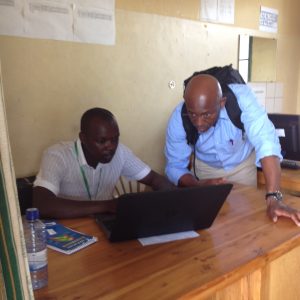
A good idea alone will not solve a problem. It’s takes drive to make an idea a reality – even if that means iterating, changing paths, or starting over. Like most global health startups, both Brezinski and Bitarakwate experienced countless obstacles. Yet their motivation to solve a problem – not the innovation itself – led to their personal and professional successes.
“Motivation is always tested when the going gets tough,” said Tamer. “But I encourage early stage innovators to get up close and personal to the problem they’re trying to solve before they actually try to solve it with an innovation or by starting a company. If they’re committed, chances are they’ll stick with it to solve the problem as opposed to quitting if something doesn’t go as planned.”
Identify Strengths and Weaknesses
Limited resources often force many early stage inventor-entrepreneurs to wear multiple hats: CEO, accountant, marketer, chief technology officer. Yet the skills required to perform specific tasks may not be in their wheelhouse, or they discover that they excel at a role they never thought would suit them. Beyond specific duties, there may also be certain soft skills required to successfully perform a role. For instance, while fulfilling particular marketing duties, it can soon become evident that listening skills are crucial.
Reflecting on their own capabilities can also help innovators identify their ideal pathway. For instance, Bitarakwate initially saw a different path for himself. “I never considered becoming a medical professional. I thought of myself as an engineer. I used to fix things that broke around the house. That’s one side of me. When I walk into a health facility, I carry tools around with me to fix things.”
Bitarakwate understands that this “side” of himself has been instrumental in propelling him along his pathway. As he explains, “being a fixer helped me in my clinical and development work. I’m not averse to trying new ways of fixing things. My quest for fixing things helped drive me and drive my passion for finding solutions.”
More often than not, innovators find they have to push through aspects of themselves that aren’t as developed. For instance, Brezinski had to overcome her introverted tendencies to drive her innovation forward. “My inclination is to be an introvert. I need time for introspection. However the part of me that’s mission driven recognizes that there are things more important than your personality traits or your comfort.”
Venturing into the realm of I&E can quickly confirm already known strengths and weaknesses while creating a platform for innovators to discover new things about themselves. But discovering these qualities before facing a critical hurdle on the journey is ideal.
“It’s difficult to honestly reflect on your strengths and weaknesses,” said Sampath. “There’s great pressure in the startup community to be a jack-of-all-trades. Also, very high-performing people often don’t want to admit that they’re lacking in some area. But unaddressed shortcomings can quickly unravel almost any plan, project, or business.”
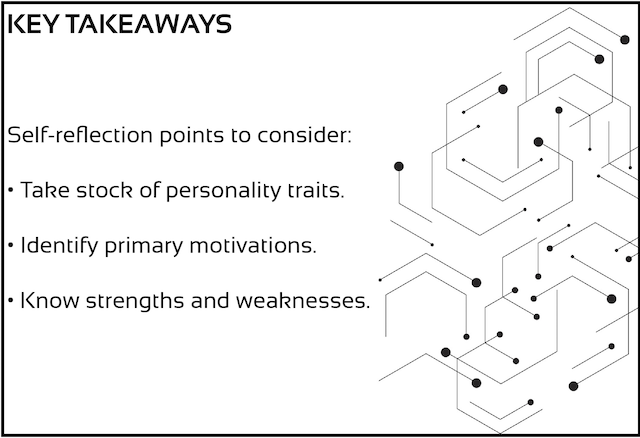
Foster an Entrepreneurial Mindset
Technical skills are a given when developing an invention. But an entrepreneurial mindset – a set of attitudes, skills, and behaviors – is essential for innovators working to transform an idea into a business. Regardless of the chosen commercialization pathway, the earlier innovators develop and hone aspects of this mindset, the more likely they are to succeed. Learning to modulate skills and attitudes in response to particular circumstances, contexts, and goals is equally important. While many skills and attitudes play into this work, the following three were mentioned most often by the innovators, coaches, and mentors we interviewed.
Maintain Insatiable Curiosity
All early stage innovators heading down a commercialization pathway will encounter a challenging hurdle: not knowing what they don’t know. It takes stamina to navigate the unknown for long stretches at a time. Curiosity is a necessary attribute for overcoming that obstacle. It includes being open to learning new things, recognizing the limits of their knowledge, and looking beyond the specific technology or innovation to solve a problem.
“Expect surprises when you enter the unknown,” said Bitarakwate. “Be ready for things to go differently than planned. A curious mind can help you find another way to achieve your goal while remaining steadfast in your mission to solve a problem.”
Curious innovators are also open to coaching. “You need to know what you don’t know,” said entrepreneurship coach, Agostinho Almeida. “That’s why it’s so important to be receptive to feedback. It’s okay if an innovator doesn’t have all the answers. Discovery is what this journey is all about.”
Tamer agrees. “No one knows everything. You have to understand that you may have missed the mark when first starting out. But when you’re curious to learn how to improve, you’re more willing to listen to others with more experience.”
Innovators should establish a mission and goal, and then remain curious about all of the potential avenues to get there, even if that means acknowledging errors in their original perceptions of how that would unfold.
While coaches encourage early stage innovators to be open minded and endlessly curious, Brezinski encourages innovators to balance curiosity with scientific discipline and rigor.
“Curious people are inclined to break the mold and be disruptive. My college professors taught me about balancing curiosity with discipline, thinking outside the box while at the same time learning the essentials of your field of interest. Knowing the rules allows you to know how to effectively break them when necessary.”
Learn to Build and Manage Relationships
No one person can move an innovation forward. Successful inventor-entrepreneurs have strong networks of people who support and inform them along their journey. The innovators and coaches we interviewed noted that trust, camaraderie, conflict management, and a willingness to engage with experts are key ingredients to building valuable relationships.
Nuño founded Unima with his wife and two brothers. He feels that having solid trust with his teammates gave his company an edge from the beginning. “Many founders fail because they don’t have complete trust in their teammates,” said Nuño. “A team is like a family. You must have genuine trust in one another. I know our story is unique, but going in with that foundation of trust allowed us to concentrate on building our business to have an impact from the beginning.”
Not everyone has the advantage of Unima’s foundation of strong connections at the outset. Building relationships on a team takes time and focus, but it’s worth the investment. Once camaraderie is established, bonds form, creative sparks fly, and the energy of the team propels the project or company forward. “I believe the best aspect of Simprints isn’t our technology, it’s our people,” says Manhart. “I look forward to seeing these people each day. They keep me motivated. They’ve even become my friends. Humor has become critical to building connections on our team. One of our values is laugh together, grow together. Humor breaks down tension. If you can joke and have fun together, you see one another as human, not just a co-worker with a title. As a result, you function better as a team.”
All teams experience friction, but finding support can help maintain strong relationships. As Manhart mentioned, it’s important to find ways to break tension on a team. Nuño uses a unique strategy to navigate differences of opinion and to build consensus within his team. “If we don’t agree on something, we’ll talk about the disagreement with someone outside of our team. The fresh perspective will help us discover the best approach.”
Cultivating meaningful connections beyond a team or company is also crucial for early stage innovators. As Sampath noted in the article, How to Harness the Power of Startup Networks:
“In…science and technology innovation, there is often a fairly narrow skillset that comes with being an engineer or a scientist. When [engineers or scientists] try to bring an innovation out of the lab and into the market, they need a well-rounded team to ensure that the essential strategic components are covered.”

Building strong connections with trusted advisors and mentors with varying skillsets, experiences, and connections requires innovators to be transparent and honest. According to Xcelerator mentor, Michael Free: “Early stage inventor-entrepreneurs are not predisposed to share their initial ideas with other people. It becomes necessary for them to see that they’re not going to achieve success that way. They have to be willing to share their thoughts and ideas and build a coalition of support, a constituency of champions and collaborators.”
Echoing these points, Almeida explains: “An innovation process begins with the ability to be transparent and honest, which often means admitting that your initial plan wasn’t right. The tendency to be proprietary about ideas or to be wed to a certain way of thinking about an invention will get in the way. You won’t gain the insights of others who may bring new perspectives to your project or venture. The willingness to be open to this inevitability is key.”
If no one person has all the answers for how to move an innovation forward, then building authentic relationships—in a team, with mentors, and others who support and inform the evolution of the innovator’s pathway—is a crucial building block for success.
Become a Resilient Risk Taker
In I&E, uncertainty comes with the territory. That’s why innovators must often take risks to determine if they’re on the right track. The entrepreneurs and coaches we interviewed encouraged innovators to adopt a resilient mindset when navigating the unexpected. Doing so empowers innovators to take necessary risks, gain insights if things go wrong, and move forward smarter and stronger.
According to Nuño, risk-taking is important to move a project or venture ahead. Even more important: learning from inevitable mistakes. “Nelson Mandela once said, ‘I never lose. I either win or learn.’ That’s a very important mantra for entrepreneurs at any stage. You’re constantly going outside your comfort zone. You can’t grow if you don’t test the waters. If you fail, be willing to learn from the mistake.”
Manhart has built his company’s culture around bouncing back when risks don’t pan out. “You can’t be in a decision-making role and not take risks because you’re afraid things will go wrong,” said Manhart. “People [in our company] are happy with not always knowing the outcome of a decision because most of the time it works out, but if it doesn’t, you learn from it and move on.”
Brezinski thinks innovators develop considerable wisdom as a result of adopting a resilient mindset. “As the popular quote says, ‘It’s not how hard you fall, but about how fast you get up.’ When I’ve tried things that weren’t successful, I used it as an opportunity to evaluate what went wrong. I thought about why I failed and the lessons learned from that experience. I always got up wiser and ready to use that information to take on the next challenge.”
As innovators venture farther down their pathway, the stakes get higher. Honing a resilient mindset early on will serve them well. It certainly has for long-time innovator, Bitarakwate. “I keep learning from whatever pitfalls arise, correcting in good time, and changing course to keep the project on track.”
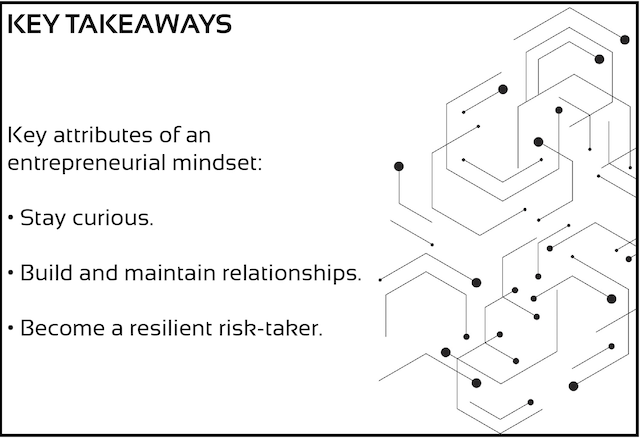
Start the Process Early
It’s evident that there are many factors that contribute to an innovator’s success. The information gathered from our interviews show that the skills and attitudes innovators should consider cultivating early on include:
- thinking outside the box,
- navigating the unpredictable with curiosity and an open mind,
- and thriving on opportunities to test ideas and push the envelope of what they and others expect.
In the innovation sphere, pivot points present themselves in ways that continually test character and instigate personal and professional sacrifices. In the process, innovators stretch their capabilities and acquire new, unexpected competencies, often bringing themselves to opportunities they couldn’t have predicted at the beginning of their journey.
However, discovering and learning critical skills and mindsets before reaching the trenches can only benefit early stage science and technology innovators.
The rest of our Innovator Insights Series will focus on the hard-learned lessons of seasoned entrepreneurs that help illuminate the path for tomorrow’s innovators, with the next installment taking a close look at the value of mentorship, coaching, and intensive training programs for early stage innovators.
Other Installments in the Innovator Insights Series
Mastering Strategy Development